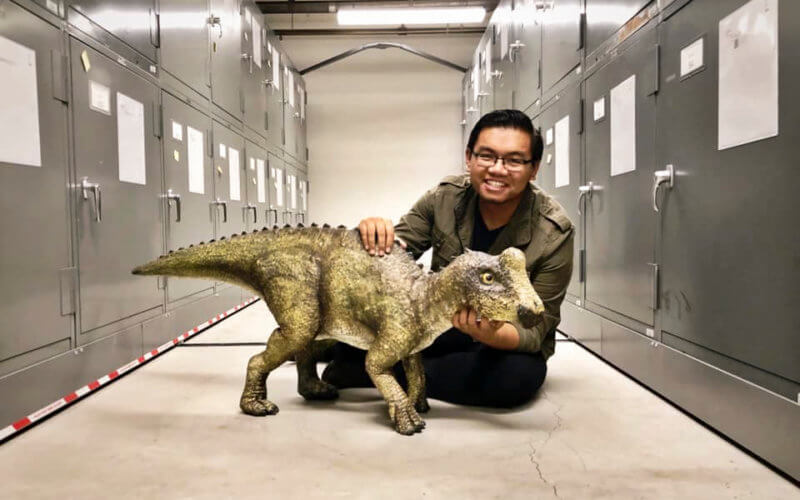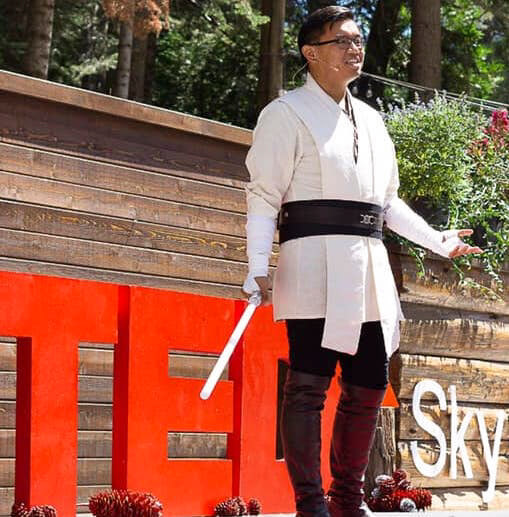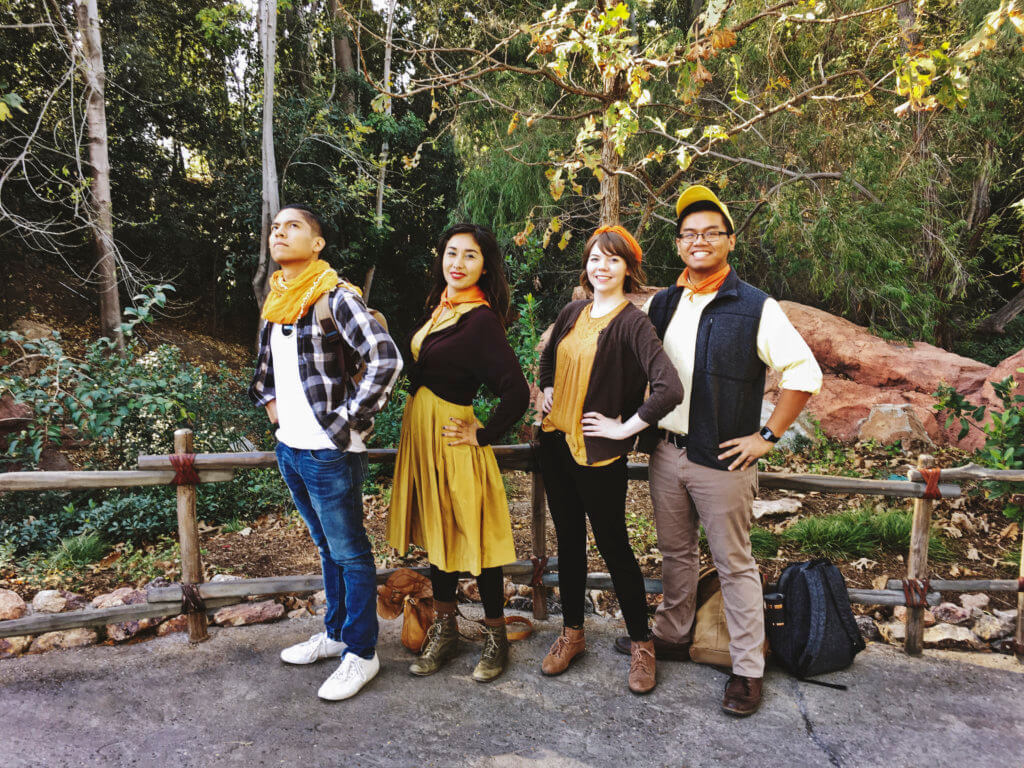
Whether dressing up in a Star Wars Jedi costume with a lightsaber in hand, talking about fossils of prehistoric Pokémon as the researcher “Professor Oak” or sharing dinosaur facts from “Jurassic Park” films, alumnus Gabriel-Philip Santos hopes to inspire and engage others in learning science.
A self-confessed “science nerd” and comic-con and pop culture enthusiast, Santos is a paleontologist-turned-educator. He is a first-generation Filipino scientist who began using cosplay — costume play, such as dressing up as a character or concept — as an informal way to teach science.
Santos, who earned a master’s degree in geology in 2018 from Cal State Fullerton, is now a paleontologist and educator for the Raymond M. Alf Museum of Paleontology at The Webb Schools in Claremont. As collections manager, he oversees the museum’s fossils and serves as the outreach coordinator, where he plans events and activities for pre-K-12 and general audiences, including pop-up museums, Cosplay for Science and Fossil Friday Chats.
At CSUF, he studied the paleobiology of marine mammals, particularly the extinct hippo-like desmostylians, under the mentorship of James F. Parham, associate professor of geological sciences.
For his work in science education, Santos has been selected as a 2021 Grosvenor Teacher Fellow by National Geographic and Lindblad Expeditions. He is one of 50 educators from across the U.S., Canada and Puerto Rico who will embark on a Lindblad Expeditions voyage to experience natural wonders, alongside a team of scientists and National Geographic photographers. Due to the pandemic, a voyage date has not been set.
What are you looking forward to as Grosvenor Teacher Fellow?
This opportunity is a dream come true. National Geographic has an incredible history of using storytelling to inspire critical thinking. As an educator, I’ve taken what I’ve learned from so many to develop my own style that incorporates my love of storytelling, my background as a scientist and my drive to help others. The fellowship will allow me to grow as an educator, expand my efforts to connect the sciences to people of all backgrounds and show students that there is a place for science in everyone’s lives.
What do you hope to gain from the experience?
I’m excited to have the opportunity to join an expedition and visit one of many natural and cultural environments around the world. My goal is to enhance geographic learning that I can then bring back to students, classrooms and our museum audience.
How does cosplay promote science learning?

“Cosplay for Science” is a science education initiative that combines science storytelling, pop culture and cosplay to teach science. We help our audiences understand and recognize the science in their everyday lives, and develop critical thinking opportunities in fun and engaging methods. We create pop-up traveling exhibits, such as the Star Wars-inspired “Galactic Archive,” which helps people see how science-inspired fictional worlds can expand their perspectives on appreciating science. We also break down barriers by changing perceptions of what is and who can be a scientist.

What was the inspiration for Cosplay for Science?
I created the science communication initiative with fellow CSUF alumni Michelle Barboza (’16 B.S. geology) and Isaac Magallanes (’17 B.S. geology), and current CSUF environmental studies graduate student Brittney Stoneburg of the Western Science Center, to help make science education more relatable and scientists more approachable. We started by bringing fossil specimens to comic-cons from our museums and then cosplaying as characters from Jurassic Park. Attendees are much more likely to engage with us as scientists when we are in cosplay and sharing our love of pop culture — they are not afraid to ask us questions.
How did your CSUF education inform your work as a science educator?
I learned so much about science from Dr. Parham and the responsibility that scientists have to make sure people understand our work. He understands the power of science communication and gave me the opportunity to grow as a science communicator. My favorite times included learning about geology firsthand in the field by holding an actual rock specimen or seeing rock formations. Those field experiences stuck with me and influenced the way I teach. I want to immerse my learners in the subject as much as possible, create experiences that inspire the wonders of the natural world and encourage critical thinking about our planet.